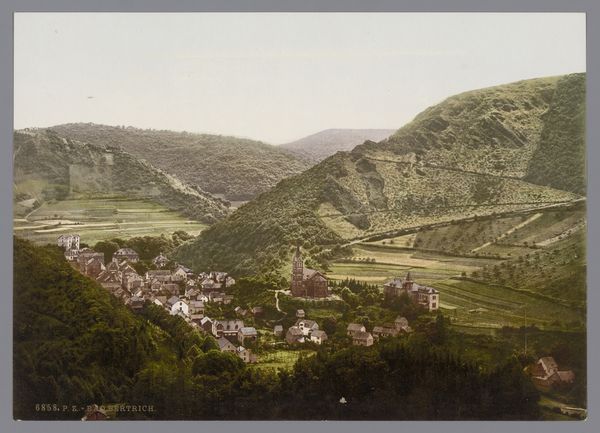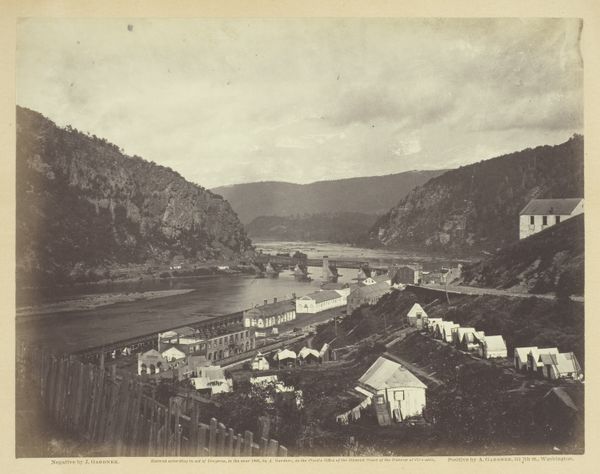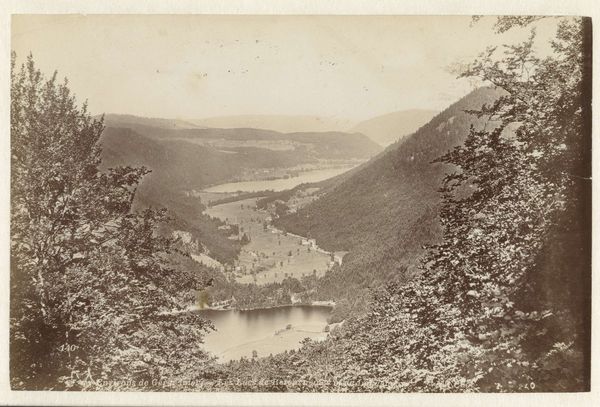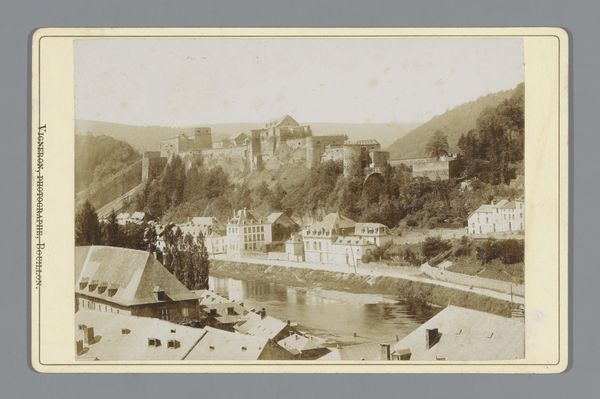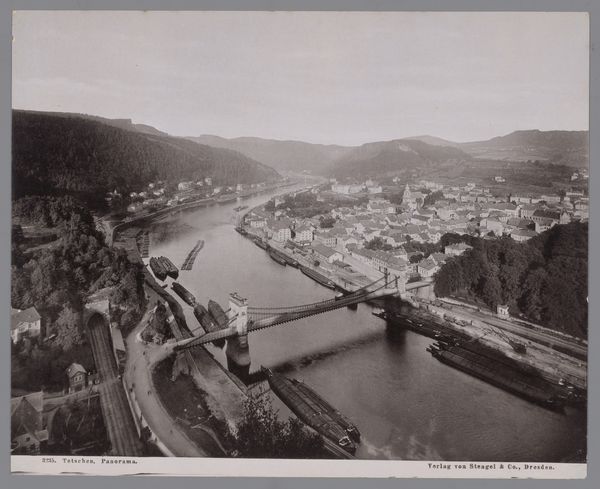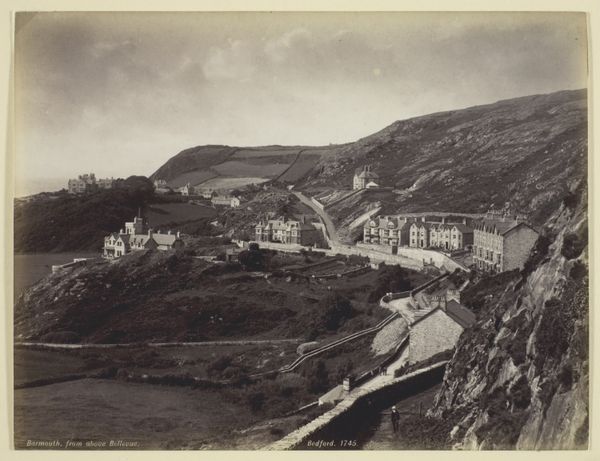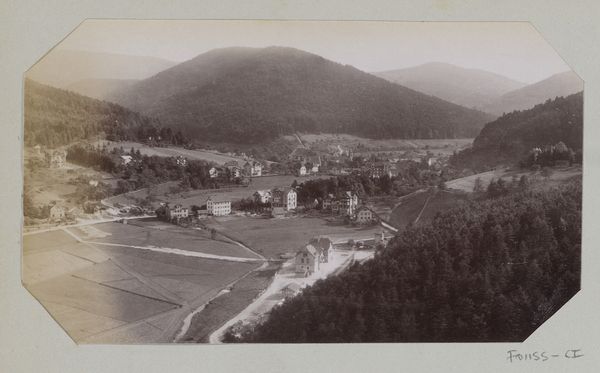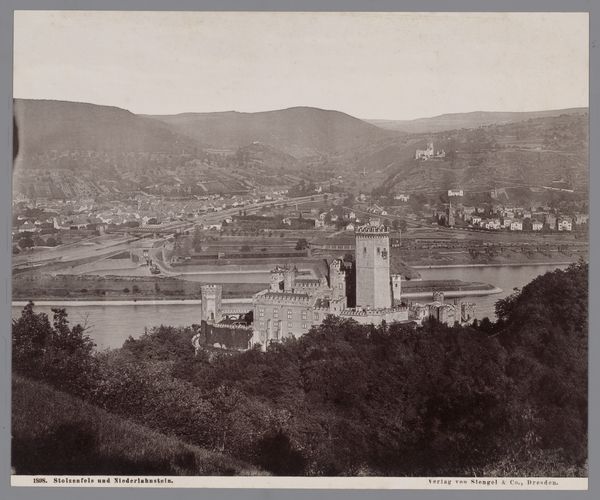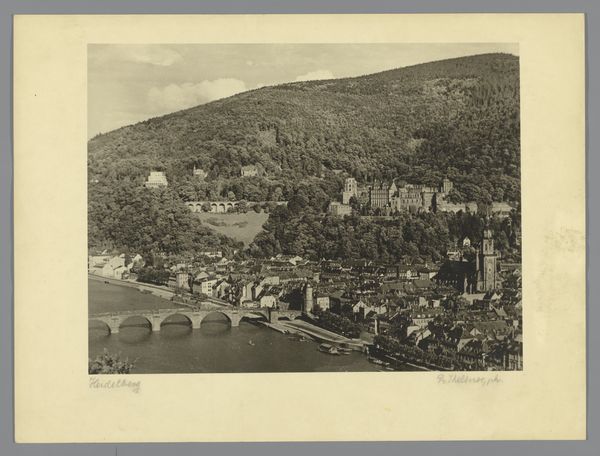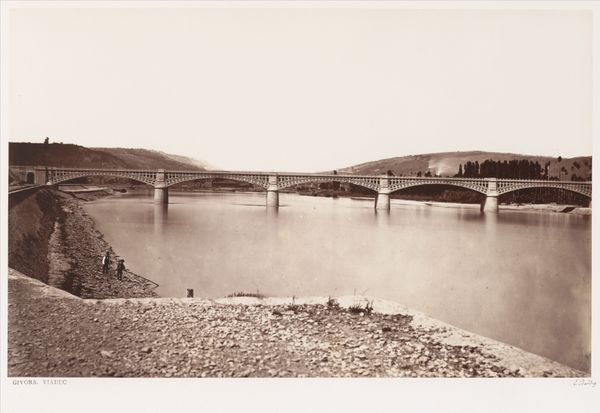
Gezicht op Alf en Bullay aan weerszijden van de Moezel in Duitsland 1900 - 1945
0:00
0:00
photography
#
landscape
#
river
#
photography
#
orientalism
#
cityscape
#
watercolour illustration
Dimensions: height 121 mm, width 169 mm
Copyright: Rijks Museum: Open Domain
Editor: This photograph, taken sometime between 1900 and 1945 by an anonymous photographer, shows "Gezicht op Alf en Bullay aan weerszijden van de Moezel in Duitsland" - a view of Alf and Bullay on either side of the Moselle River in Germany. I find the composition striking; the river creates a strong diagonal line dividing the image. What elements do you see that stand out? Curator: The river undeniably establishes the dominant spatial logic. Consider how its serpentine form carves a deep recess into the landscape, dictating the placement of the built environment and modulating the interplay of light and shadow. The towns themselves—how would you describe their arrangement in relation to the topography? Editor: Well, they seem nestled within the valley, almost clinging to the riverbanks. The buildings appear small and clustered, contrasting with the imposing hills. Curator: Precisely. Now, observe the chromatic scale. How does the photographer employ color to differentiate planes and textures, thereby constructing depth? The cool tones of the river against the warmer hues of the verdant hills… Editor: I see it. The color contrast accentuates the depth and emphasizes the organic shapes of the hills versus the structured, man-made elements of the towns. Are the somewhat muted tones typical of photography from this era? Curator: Indeed. The photographic processes of that time, combined with the likely hand-coloring, often yield such a distinctive palette. The very artifice of the applied colour warrants attention in any critical reading. And further, have you noticed how the light appears? Does it feel diffuse, lending a certain timelessness? Editor: Yes, the lighting seems soft and even. It almost feels like I'm looking at a watercolour illustration rather than a straightforward photograph. Thanks for pointing that out, I was getting lost in its picturesque appeal. Curator: Not at all. It is the tension between representation and abstraction that makes images so powerful. Editor: This has helped me see the image not just as a pretty landscape but as a carefully constructed visual statement.
Comments
No comments
Be the first to comment and join the conversation on the ultimate creative platform.
